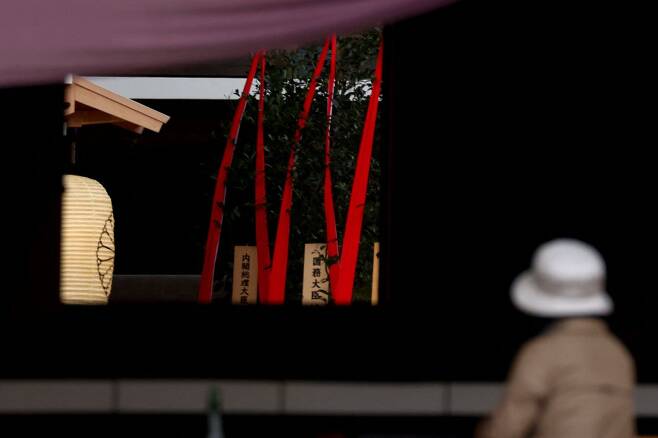Seoul 'regrets' over Kishida's Yasukuni offering
이 글자크기로 변경됩니다.
(예시) 가장 빠른 뉴스가 있고 다양한 정보, 쌍방향 소통이 숨쉬는 다음뉴스를 만나보세요. 다음뉴스는 국내외 주요이슈와 실시간 속보, 문화생활 및 다양한 분야의 뉴스를 입체적으로 전달하고 있습니다.

South Korea’s Foreign Ministry on Sunday expressed “deep regret” over Japanese Prime Minister Fumio Kishida’s sending of a ritual offering to the Yasukuni war shrine, which is seen by its Asian neighbors as a symbol of Japan’s wartime aggression.
Kishida sent a “masakaki” tree offering under his name as prime minister to celebrate the shrine’s two-day fall festival that runs through Monday, according to Japan’s Kyodo News.
It marked Kishida’s first such offering to the shrine since taking office earlier this month. Kishida does not plan to visit the memorial in person, but his immediate predecessor Yoshihide Suga made a pilgrimage to the shrine Sunday.
“The government expresses deep disappointment and regrets that Japanese leaders again sent the offerings and visited Yasukuni Shrine that glorifies Japan’s past war of aggression and enshrines war criminals,” Foreign Ministry spokesperson Choi Young-sam said in a written commentary.
It urged Japan’s leaders to “squarely face history and show by action their humble introspection on and genuine self-reflection for the past history, on the occasion of the launch of the new cabinet.”
Yasukuni Shrine in central Tokyo honors Japan’s 2.5 million war dead, including 14 convicted Class-A war criminals from World War II.
Japanese leaders’ offerings and visits to the controversial memorial have long outraged South Korea and China, which bore the brunt of Japan’s wartime hostility. The neighbors view the pilgrimage to the shrine as Japan’s lack of remorse over its military aggression and an attempt to glorify the past deeds instead.
The last time a sitting Japanese leader visited the shrine was December 2013, when Shinzo Abe paid a visit that sparked strong criticism from South Korea and China. Since then, Japanese prime ministers have avoided visits to the shrine while in office, but have still continued to send offerings.
During his one-year tenure as prime minister, Suga also did not visit the shrine in person, but sent offerings instead.
Kishida took office at a time as its ties with South Korea have continued to be strained due territorial and historical disputes stemming from Japan’s 1910-45 colonial rule of the Korean Peninsula, which have recently morphed into an economic feud.
Meanwhile, South Korean President Moon Jae-in and Kishida finally held their first phone call Friday, where they agreed to deepen relations and accelerate talks to resolve the protracted row over wartime forced labor -- one of the major sticking points in the strained ties between the neighbors.
By Ahn Sung-mi(sahn@heraldcorp.com)
Copyright © 코리아헤럴드. 무단전재 및 재배포 금지.